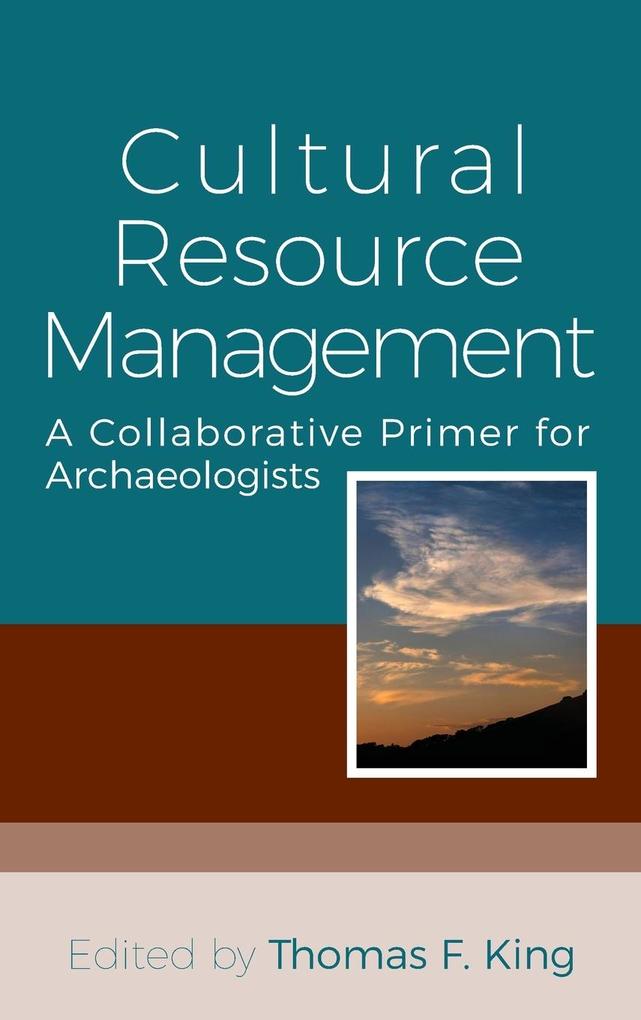Bücher versandkostenfrei*100 Tage RückgaberechtAbholung in der Wunschfiliale
NEU: Das Hugendubel Hörbuch Abo - jederzeit, überall, für nur 7,95 € monatlich!
Jetzt entdecken
mehr erfahren
Zustellung: Mo, 29.09. - Do, 02.10.
Versand in 7 Tagen
VersandkostenfreiBestellen & in Filiale abholen:
Stressing the interdisciplinary, public-policy oriented character of Cultural Resource Management (CRM), which is not merely "applied archaeology," this short, relatively uncomplicated introduction is aimed at emerging archaeologists. Drawing on fifty-plus years' experience, and augmented by the advice of fourteen collaborators, Cultural Resource Management explains what "CRM archaeologists" do, and explores the public policy, ethical, and pragmatic implications of doing it for a living.
Inhaltsverzeichnis
Preface
Introduction to Cultural Resource Management in the United States
List of Abbreviations
Chapter 1. What is CRM? How Does it Differ from Archaeology?
Chapter 2. What CRM Archaeologists Do: Consultation and Identification
Chapter 3. What CRM Archaeologists Do: Evaluation
Chapter 4. What CRM Archaeologists Do: Assessing Adverse Effect
Chapter 5. What CRM Archaeologists Do: Resolving Adverse Effect
Chapter 6. What Else Do CRM Archaeologists Do?
Chapter 7. Special Cases and Loose Ends
Chapter 8. Examples of Worldwide Cultural Resource/Heritage Management
Archaeology and CRM in Australia
Caitlin Allen
Cultural Resource Management in Belize
Jaime J. Awe
A Very Brief Introduction to China's Wenwu Management System and CRM Archaeology
Wang Renyu
CRM in Europe
Raimund Karl
CRM in Nigeria
Kolawole Adekola
Chapter 9. Thoughts in Conclusion
Appendix: Legal Matters
About the Author and Collaborators
Index
Introduction to Cultural Resource Management in the United States
List of Abbreviations
Chapter 1. What is CRM? How Does it Differ from Archaeology?
Chapter 2. What CRM Archaeologists Do: Consultation and Identification
Chapter 3. What CRM Archaeologists Do: Evaluation
Chapter 4. What CRM Archaeologists Do: Assessing Adverse Effect
Chapter 5. What CRM Archaeologists Do: Resolving Adverse Effect
Chapter 6. What Else Do CRM Archaeologists Do?
Chapter 7. Special Cases and Loose Ends
Chapter 8. Examples of Worldwide Cultural Resource/Heritage Management
Archaeology and CRM in Australia
Caitlin Allen
Cultural Resource Management in Belize
Jaime J. Awe
A Very Brief Introduction to China's Wenwu Management System and CRM Archaeology
Wang Renyu
CRM in Europe
Raimund Karl
CRM in Nigeria
Kolawole Adekola
Chapter 9. Thoughts in Conclusion
Appendix: Legal Matters
About the Author and Collaborators
Index
Produktdetails
Erscheinungsdatum
01. Februar 2020
Sprache
englisch
Seitenanzahl
176
Herausgegeben von
Thomas F. King
Verlag/Hersteller
Produktart
gebunden
Gewicht
415 g
Größe (L/B/H)
235/157/14 mm
ISBN
9781789206234
Entdecken Sie mehr
Bewertungen
0 Bewertungen
Es wurden noch keine Bewertungen abgegeben. Schreiben Sie die erste Bewertung zu "Cultural Resource Management" und helfen Sie damit anderen bei der Kaufentscheidung.









